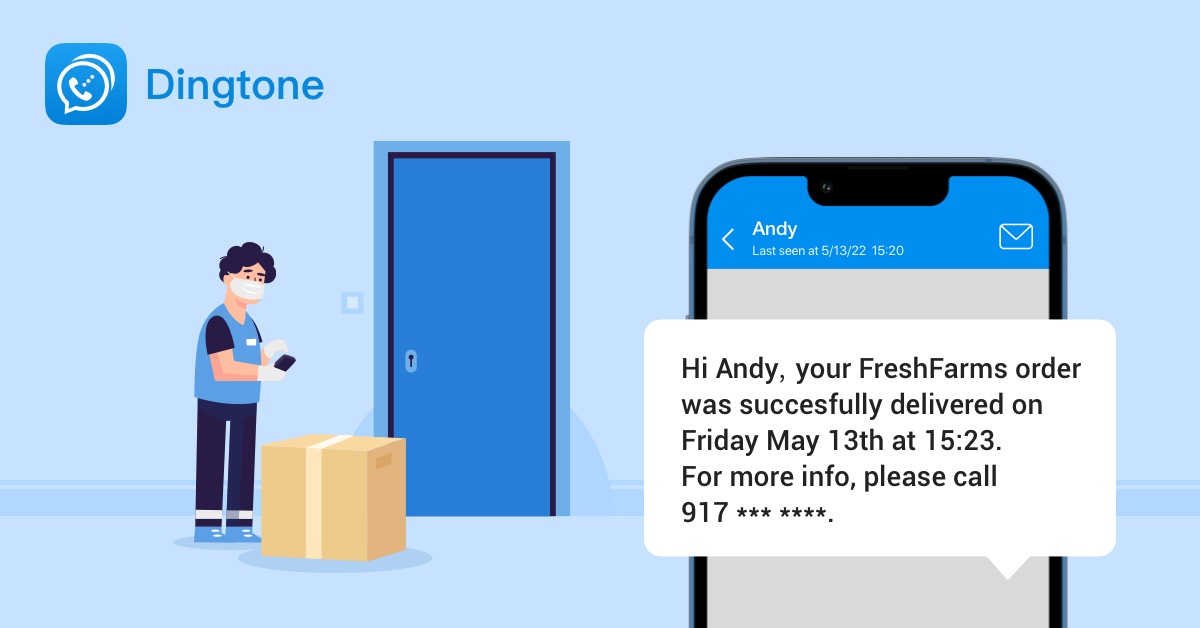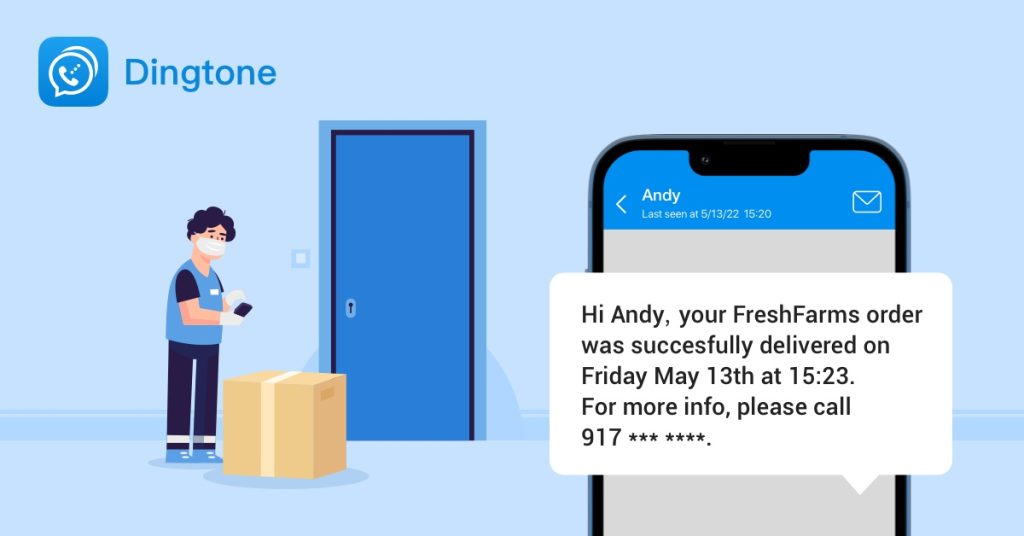In recent years, due to the impact of the epidemic, the income of some small businesses and other businesses like home bakeries is not optimistic, so they have turned their eyes to the field of takeaway. However, when different ways are chosen to build a delivery system, the result is always different although takeout seems to increase orders and income.
While the focus of this article is on small to medium businesses looking to add a delivery service to stay competitive in their industry, the features that are to be discussed below are also essential for courier companies looking to enhance earnings by making their delivery teams faster and more efficient. However, to better establish a delivery system with no cost, there are some things you should know before you start.

Not all deliveries lead to increased orders and income.
Restaurants and food establishments only offered take-out and delivery choices at the start of the pandemic. Even after being authorized to function at a reduced capacity, they continued to rely on this method of producing revenue, even during a crisis. Even ramen companies that previously only offered dine-in alternatives for many of their menu items soon realized the benefits of food delivery and its importance to their business.
As one of the biggest delivery systems, food delivery has various advantages for both customers and businesses. It’s quick and easy and provides a wide range of features that aren’t available on other platforms.
However, not all deliveries lead to increased orders and income unless suitable measures are taken. Takeout and delivery are clearly in demand, but what does this mean for restaurants? How many individuals would still rather order takeout or have meals delivered than eat in? Will they prefer curbside pickup? Is it still worthwhile to devote time and resources to providing a delivery service? Besides, the different delivery systems will bring different effects. If your delivery system is not very suitable and effective, your orders are more likely to drop or your income fails to go up due to the high cost.
What Contributes to a Delivery System?
When you think of a delivery system, you might envision a complex network of gears and pulleys or a sophisticated series of procedures. But, in the end, it’s not too difficult. A delivery system is a set of structures, regulations, and processes that govern how a corporation offers services to customers. To put it another way, it’s the bedrock of a service strategy.
The delivery system needs to include contacting customers, mainly for taking orders and marketing your goods or services, finding a deliveryman to deliver the goods, and ensuring that the deliveryman delivers them accurately and in a timely manner. That’s all that a delivery system covers. Whenever one element isn’t achieved, disputes or reduced income will be possibly caused.
However, if you don’t have to consider the cost, you can certainly choose an all-in-one delivery platform, which can save your time and effort. But please pay attention to the drawbacks of the delivery platform. There are mainly two things that you should take into consideration.
The one thing is that high costs are required to enter the delivery platform. Besides, the premium services are costly if you want to subscribe and each transaction may be deducted from the commission. What’s worse, you need to share income with the platform. Another important thing is that customers never belong to you alone, their information is obtained by the platform, and they will also see other competitors’ products or services on the platform, which is very bad for your product and sale.
Therefore, it’s actually very hard at the beginning of establishing a delivery system. Before you start a service delivery system, think carefully about whether your business meets the requirements of a good service delivery system.
Key Elements of a Service Delivery System
Service culture, service quality, staff engagement, and customer experience are the four components of a strong service delivery system. These elements collaborate to create successful services. The service delivery system of a corporation often reflects its business strategy. It interacts with the rest of the company, in the same manner, it interacts with customers. As a result, understanding a company’s objectives is critical when examining its delivery system.
Service Culture
The culture of a firm influences how employees and customers interact. Employee motivation, trust levels, and accountability for results are all part of it. In turn, the company’s culture influences service quality, staff engagement, and customer experience.
Service Quality
Your consumers’ experience with your services is what you call service quality. It has an immediate impact on customer retention, which is critical to a company’s success. Quality services, on the other hand, go beyond simply making a client happy at the end of a procedure. It also involves the quality of your staff training and how they handle client encounters throughout the process.
Staff Engagement
When employees are disengaged, a company cannot efficiently supply services. They may not deliver satisfactory service or even show up for work. This is why employee engagement is crucial. Employees are more involved in their jobs when there is a connection between the organization and them. Employees that are engaged see their jobs as more than just a means of subsistence. They believe they have a voice in how things are done at work.
Customer Experience
The total impression a client has of your services is referred to as customer experience, which is also what they say about your service to their friends and relatives. Clients are more inclined to inform others about their excellent experiences with your business. When you have a terrible encounter, word travels quickly. A service delivery system’s customer experience is critical. It has a significant impact on your company’s revenue and reputation.
How to Start a Delivery System in 3 Steps (Low Cost + High Efficiency)
It can be intimidating to start a delivery system, so let’s simplify it down into three simple steps.
Step 1. Establish a delivery process.
A delivery process is an end-to-end procedure in which you take your customers’ orders, plan a route, load items into the drivers’ cars, and deliver it to the customer’s front door. This is the first phase because it is critical to integrate drivers into a pre-built system. If you hire new drivers and try to “fly it,” you’ll quickly deplete your profit margins due to inefficient deliveries, and you may lose otherwise capable employees who become disgruntled with long delivery times (not to mention the risk of upsetting your customers with missed ETAs and lost packages).
Step 2. Employ and train drivers.
Depending on the size of your business, you may need to hire new delivery drivers or train existing employees to take over the position. Many small businesses switched to a direct-to-consumer model as a result of COVID-19, allowing them to keep some (if not all) of their employees on payroll by turning them into delivery drivers.
Step 3. Inform your customers that you provide delivery services.
If you’re an existing business that’s adding local delivery to your services, it’s vital that you inform your customers about it so they can take advantage of it. If your business has a social media presence, you may use posts and stories to inform your loyal clients that you are now offering local delivery without having to pay for advertisements. If you contact customers with messages, things are easier since the notification can be delivered with texts, images (menus), and locations.
Simple Tips to Establish a Delivery System with Low or Even Zero Cost
Since you have known the necessary elements to establish a delivery system and if your service has great potential in earning money and reputation as well, then you should better develop a plan with low or even NO cost to get your goal of making profits by the delivery system. Here are some simple tips on offer if you don’t know how to start.
Tip#1. Do create a social medial group.
Build a social medial group if possible and you will have the opportunity to synchronize your promotional activities to fans and users as soon as possible to increase user stickiness. Sometimes if you need to deliver to a block, you can notify the community to see if there are any orders on the way, which can help you reduce costs and increase revenue.
Tip#2. Keep smooth communications with customers.
Always remember to establish good communication with users, such as calling, texting, positioning, and sending pictures anytime and anywhere. These functions must be available and in good condition. Dingtone is such an all-in-one app from which you can get a local number at a very low price or even without any charge, which is very necessary for delivery. As the services are basically community-wide, and if the customers choose no-contact delivery, then the takeaway can also notify the user that the order has been delivered smoothly by taking a photo to avoid misunderstanding or trouble.
In addition, keeping good communication with customers can also update the order status at any time, so that the user knows what step the order has reached, whether it is in production, packed, delivered, or already delivered, etc.
Tip#3. Self-deliver if possible.
As has been mentioned before, third-party delivery platforms are costly and can cut your profit margins. Popular food delivery apps such as DoorDash, Uber Eats, Grubhub, and Postmates are popular in the restaurant industry. However, these apps are prohibitively expensive for restaurants, forcing them to boost rates merely to break even. Besides, you’re employing a third party to represent your company when you hire a delivery service, which means you’re giving up control of the client experience. While your client may have engaged with your organization online or over the phone, it is a third-party delivery driver who gives your customer the final image of how your company treats its customers. When couriers are caught mishandling shipments, things can quickly spiral out of control.
Therefore, compared with choosing a delivery service, self-delivery is more economical and more reliable, because it can guarantee the delivery. Unless you have insufficient staff, then you prefer to deliver food yourself.
Bottom Line
- Not all deliveries lead to increased orders and income. If your delivery system is not very suitable and effective, your orders are more likely to drop.
- A service delivery system is a framework for a company’s client service delivery. The delivery process includes service culture, employee engagement, service quality, and customer experience.
- We can simplify the delivery system down into three simple steps: establishing a delivery process, employing and training drivers, and informing your customers that you provide delivery services.
- You should better develop a plan with low or even no cost to gets your goal of making profits by the delivery system and you can take some simple tips like creating a social medial group, keeping smooth communications with customers, and self-delivering if possible.
